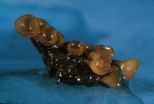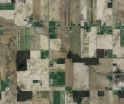Exercise associated with lower rate of fractures in elderly women
2010-09-28
(Press-News.org) Home-based exercises followed by voluntary home training seem to be associated with long-term effects on balance and gait (manner of walking), and may help protect high-risk, elderly women from hip fractures, according to a report in the September 27 issue of Archives of Internal Medicine, one of the JAMA/Archives journals.
"Falls are responsible for at least 90 percent of all hip fractures," the authors write as background in the article. "Hip fractures place the greatest demands on resources and have the greatest effect on patients because they are associated with high mortality rates and increased morbidity." Raija Korpelainen, Ph.D., of Oulu Deaconess Institute, Oulu, Finland, and colleagues performed an extended follow-up of 160 women who participated in a randomized trial aimed at reducing risk factors for fractures in elderly women with osteopenia (a reduction in bone mass, or low levels of bone calcium).
Of the 160 women who participated in the randomized control trial, 84 were assigned to an exercise group, while the remaining 76 were placed in the control group. Women in the exercise group attended supervised balance, leg strength and impact training sessions once a week for a 6-month period from October to March each year from 1998 to 2001. The average observation time for both groups was 7.1 years.
During the follow-up time, 17 women in the exercise group were hospital-treated for fractures, while 23 fractures occurred in the control group. Additionally, the total incidence rate of fractures in the exercise group was 0.05 per 1,000 women per year versus 0.08 in the control group. The authors found that, "fractures were proximal in 52.2 percent of the control group and 17.6 percent of the exercise group. Moderate lifelong physical activity decreased the overall risk of having any fractures during the total follow-up period." Additionally, no hip fractures occurred in the exercise group during the follow-up period, while five hip fractures occurred in the control group.
The exercise group also "demonstrated a significant gain compared with the control group in mean leg strength during the trial." Additionally, by the end of 2005, one woman in the exercise group had died compared with eight women in the control group, giving a crude death rate of 0.003 per 1,000 women per year in the exercise group and 0.03 for the control group.
According to the author's findings, "30 months of supervised, mainly home-based exercises followed by voluntary home training had a positive long-term effect on balance and gait in high-risk elderly women." Additionally, "life-long physical activity was associated with reduced risk of fractures. Furthermore, mortality was significantly lower in the exercise group than in the control group during the extended follow-up period. Regular daily physical activity should be recommended to elderly women with osteopenia."
###
(Arch Intern Med. 2010;170[17]:1548-1556. Available pre-embargo to the media at www.jamamedia.org.)
Editor's Note: This study was funded by the Finnish Ministry of Education, the Finnish Cultural Foundation, the Juho Vainio Foundation, the Miina Sillanpää Foundation, the Research Foundation of Orion Corporation and the Northern Ostrobothnia District Hospital. Please see the article for additional information, including other authors, author contributions and affiliations, financial disclosures, funding and support, etc.
END
ELSE PRESS RELEASES FROM THIS DATE:
2010-09-28
Use of pine bark extract, at a dose of 200 milligrams per day, appears safe but did not improve risk factors for heart disease, according to a report in the September 27 issue of Archives of Internal Medicine, one of the JAMA/Archives journals.
"Although traditional strategies such as prescription medications, dietary changes and physical activity have proven benefits for reducing cardiovascular disease risk, a substantial population seeks alternative therapies, including various dietary supplements, to lower cardiovascular disease risk," the authors write as background ...
2010-09-28
ANN ARBOR, Mich.---The more complex a plant or animal, the more difficulty it should have adapting to changes in the environment. That's been a maxim of evolutionary theory since biologist Ronald Fisher put forth the idea in 1930.
But if that tenet is true, how do you explain all the well-adapted, complex organisms---from orchids to bower birds to humans---in this world?
This "cost of complexity" conundrum puzzles biologists and offers ammunition to proponents of intelligent design, who hold that such intricacy could arise only through the efforts of a divine designer, ...
2010-09-28
Software downloaded during a routine office visit cuts the risk of inappropriate shocks by 50 percent for patients with implantable cardioverter defibrillators (ICD), according to research reported in Circulation: Journal of the American Heart Association.
"Hundreds of patients have been saved from unnecessary shocks by software that is safe and can be painlessly downloaded in one minute during a standard defibrillator check," said Charles D. Swerdlow, M.D., lead author of the study and a cardiac electrophysiologist at the Cedars Sinai Heart Institute in Los Angeles and ...
2010-09-28
Using data from more than 270,000 hospital stroke admissions, scientists have identified how to predict which patients are at greatest risk of dying in the hospital after stroke. Before their study, well validated models to predict in-hospital death risk after stroke were lacking, the researchers reported in Circulation: Journal of the American Heart Association.
"A mortality risk assessment tool for hospitalized stroke patients is important to clinicians, hospitals and patients," said Eric E. Smith, M.D., M.P.H., lead author of the study and assistant professor of neurology ...
2010-09-28
VIDEO:
In a few tenths of a second, Sclerotinia expels hundreds of thousands of spores in a plume that can rise 20 cm, much higher than any single spore by itself....
Click here for more information.
Long before geese started flying in chevron formation or cyclists learned the value of drafting, fungi discovered an aerodynamic way to reduce drag on their spores so as to spread them as high and as far as possible.
One fungus, the destructive Sclerotinia sclerotiorum, ...
2010-09-28
In a paper published this week in the Proceedings of the National Academy of Sciences, Cary Institute aquatic ecologist Dr. Emma Rosi-Marshall and colleagues report that streams throughout the Midwestern Corn Belt are receiving insecticidal proteins that originate from adjacent genetically modified crops. The protein enters streams through runoff and when corn leaves, stalks, and plant parts are washed into stream channels.
Genetically-modified plants are a mainstay of large-scale agriculture in the American Midwest, where corn is a dominant crop. In 2009, more than ...
2010-09-28
Burness Communications
Godwin Atser
g.atser@cgiar.org
234-803-443-0027
CGIAR
Scientists arrive in Senegal to give African hunger a black eye
At the World Cowpea Research Conference, crop experts embrace one of agriculture's oldest legumes -- prized for protein and resilience to hot, dry climates -- as food for people, livestock and astronauts
This release is available in French.
DAKAR, SENEGAL (27 September 2010)—A long neglected crop with the potential to halt hunger for millions in Africa, sustain the livestock revolution underway in developing countries, ...
2010-09-28
Researchers in the Midwest are developing microelectronic circuitry to guide the growth of axons in a brain damaged by an exploding bomb, car crash or stroke. The goal is to rewire the brain connectivity and bypass the region damaged by trauma, in order to restore normal behavior and movement.
Pedram Mohseni, a professor of electrical engineering and computer science at Case Western Reserve University, and Randolph J. Nudo, a professor of molecular and integrative physiology at Kansas University Medical Center, believe repeated communications between distant neurons in ...
2010-09-28
Baby boomers appear to be driving a dramatic rise in suicide rates among middle-aged people, a new study finds.
The suicide rate for middle-aged people – a group considered relatively protected from suicide and with historically stable suicide rates – took an upward jump between 1999 and 2005, according to research by sociologists Ellen Idler of Emory University and Julie Phillips of Rutgers University.
Their study has been published in the September/October issue of the journal Public Health Reports.
"The findings are disturbing, because they're a reversal of a long-standing ...
2010-09-28
A report presented today by Health and Consumer Policy Commissioner John Dalli to the Agriculture Council concludes that specific measures relating to storing and the application of isolation distances can help limit or avoid the co-mingling of genetically modified (GM) maize with conventional and organic maize. In particular, the Best Practice Document, prepared by the European Coexistence Bureau (ECoB) and published by the European Commission's Joint Research Centre (JRC), notes that storing seeds adequately and applying spatial isolation are the best ways to limit or ...
LAST 30 PRESS RELEASES:
[Press-News.org] Exercise associated with lower rate of fractures in elderly women

